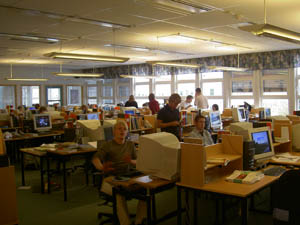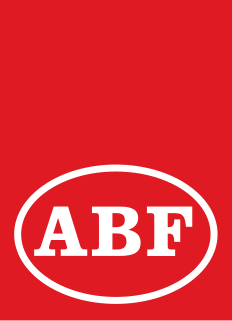 W
WEducation in Sweden is mandatory for children between ages 7 and 15. The school year in Sweden runs from mid/late August to early/mid June. The Christmas holiday from mid December to early January divides the Swedish school year into two terms.
 W
WABB Industrigymnasium is the name of three schools in Västerås, Sala and Ludvika, Sweden, secondary schools with a focus on engineering, information technology and enterprising. The Västerås branch was started in 1994 by the industrial corporation ABB, which were merged in 1987 from the Swiss Brown Boveri Corporation and the Swedish ASEA, which is headquartered in Västerås. The Ludvika school was founded by ABB in 1995.
 W
WÄngsbacka is a course and festival center focused on personal development, yoga, Tantra, dance, meditation, spirituality and self-expression. It is located in Molkom, Sweden, and was started in 1996.
 W
WArbetarnas bildningsförbund (ABF) is the educational section of the Swedish labour movement. ABF conducts seminars, classes and study circles on a variety of subjects, including workshops, languages and music.
 W
WFolk high schools are institutions for adult education that generally do not grant academic degrees, though certain courses might exist leading to that goal. They are most commonly found in Nordic countries and in Germany, Switzerland and Austria. The concept originally came from the Danish writer, poet, philosopher, and pastor N. F. S. Grundtvig (1783–1872). Grundtvig was inspired by the Marquis de Condorcet's Report on the General Organization of Public Instruction which was written in 1792 during the French Revolution. The revolution had a direct influence on popular education in France. In the United States, a Danish folk school called Danebod was founded in Tyler, Minnesota.
 W
WFolk high schools are institutions for adult education that generally do not grant academic degrees, though certain courses might exist leading to that goal. They are most commonly found in Nordic countries and in Germany, Switzerland and Austria. The concept originally came from the Danish writer, poet, philosopher, and pastor N. F. S. Grundtvig (1783–1872). Grundtvig was inspired by the Marquis de Condorcet's Report on the General Organization of Public Instruction which was written in 1792 during the French Revolution. The revolution had a direct influence on popular education in France. In the United States, a Danish folk school called Danebod was founded in Tyler, Minnesota.
 W
WThe Swedish Board of Student Finance, is a Swedish government agency under the Ministry of Education and Research. It is in charge of administration of all matters regarding student aid in Sweden. Its seat is located in Sundsvall and its Director-General is Christina Forsberg.
 W
WThe Nordic Centre in India (NCI) is a consortium of leading universities and research institutions in Denmark, Finland, Iceland, Norway, and Sweden. It was established in 2001 with the objective to facilitate cooperation in research and higher education between the Nordic countries and India. Through academic exchange NCI seeks to strengthen Indo-Nordic ties and understanding.
 W
WNu ska vi sjunga was published in 1943 by the Almqvist & Wiksell publishing company, and is a songbook for Swedish primary schools. Songs marked with * are meant to be sung in the third grade. The book was published on the initiative of Alice Tegnér.
 W
WSloyd, also known as Educational sloyd, is a system of handicraft-based education started by Uno Cygnaeus in Finland in 1865. The system was further refined and promoted worldwide, and was taught in the United States until the early 20th Century. It is still taught as a compulsory subject in Finnish, Danish, Swedish and Norwegian schools.
 W
WStröm House is a manor house at Lilla Edet Municipality in Bohuslän, Sweden. It is located west of the Göta River, in the parish of Hjärtum.
 W
WStudentexamen, earlier also mogenhetsexamen was the name of the university entrance examination in Sweden from the 17th century to 1968. From 1862 to 1968, it was taken as a final written and oral exam on graduation from gymnasium. In Finland the examination still exists. The exam traces its origin to the academic statutes from 1655 requiring the dean to examine students arriving at university before allowing matriculation. According to the school reglement of 1693, a prospective student was to have gone through both a final examination at school and an entrance examination at university. The school reglement of 1724 allowed students without a final examination from school to enroll at university, provided a person known at the university would guarantee their behaviour, which led to it becoming common for students from wealthy families to be matriculated at a very young age, accompanied by a private tutor. Although these were not actually supposed to be allowed to graduate, this rule was not always strictly upheld.
 W
WSwedish for immigrants is the national free Swedish language course offered to most categories of immigrants. Immigrants who speak Danish or Norwegian are ineligible for free Swedish tuition through SFI. All other persons who have emigrated to Sweden are entitled by law to Swedish language education.